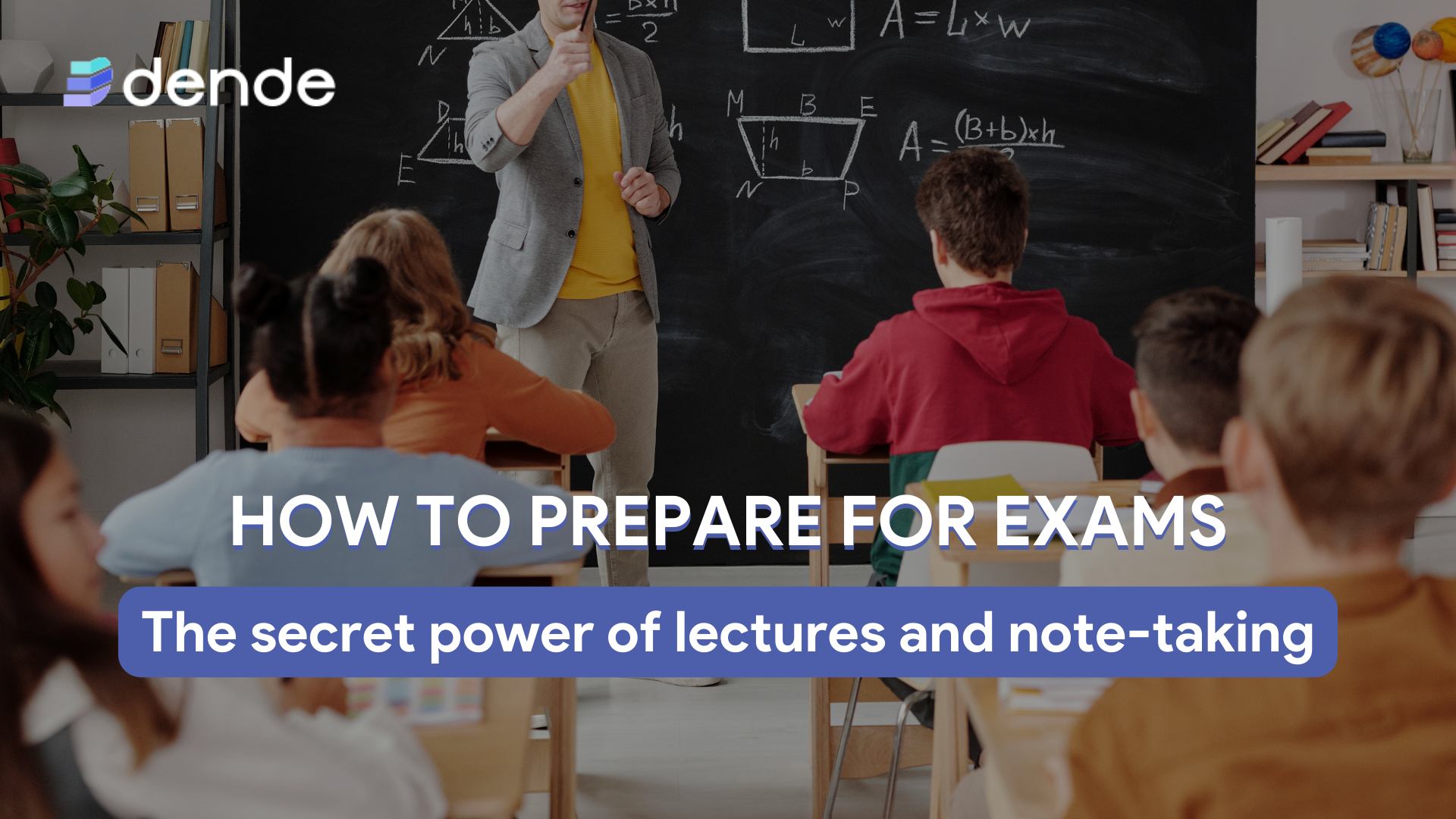
Share with your student friends
ShareGet ready for your next exam
Start for freeFind out why being present in class and taking notes is the beginning of your academic rise
Preparing for an exam isn’t just about spending hours with your books. Do you really want to ace it? Then you can’t skip classes or forget to take notes.
Let’s see why these two simple steps are the key to your academic success!
Contents
Why you should go to class and take notes
Sitting in class and listening to the professor isn’t just passive listening. It’s a way to get your brain working at full capacity.
When you take notes, you turn the professor’s words into something your brain actively processes, improving understanding and memory retention.
Classes follow a structured path that helps you see how everything connects. Your notes become a personalized map of the course, guiding you straight to the treasure of knowledge (and high grades!).
Moreover, you remember things better when you connect them to a specific event, like a particular lecture or an anecdote from the professor. This extra context makes it easier to recall information when you need it.
So we’ve seen why it’s so important to take notes and attend class.
Now here are 3 tried-and-true tips for putting these activities into practice at their best.
1. Be active in class
Let’s talk about the power of active participation in class. You know, it’s not just about being physically present and jotting down notes—it’s about truly engaging with the material.
When you actively participate in discussions, ask questions, and share your thoughts with your peers, you’re not just learning, you’re mastering the material.
Think about it: when you’re actively involved, you’re not just memorizing facts, you’re understanding concepts, seeing connections, and gaining valuable insights.
But how to actually be active in class?
- Speak up: don’t be shy! Share your thoughts, ask questions, and join discussions. Your voice matters!
- Stay engaged: take active notes, participate in activities, and stay focused. Active involvement leads to better understanding.
- Prepare beforehand: come ready to learn by reviewing materials, bringing necessary supplies, and being mentally present. Preparation sets the stage for active participation!
2. Take notes
Taking notes in class it’s not just a routine task; it’s an integral part of effective learning. When we capture key points during lectures, we’re essentially creating our own personalized study resource.
Having our notes handy can be a total lifesaver when it comes to studying for tests or tackling assignments.
Here are some tips to take effective notes:
- Stay organized: use a system that works for you, whether it’s outlining, bullet points, or conceptual maps. Keep your notes structured and easy to follow.
- Capture key information: focus on recording essential concepts, definitions, and examples rather than trying to transcribe everything word-for-word.
- Use abbreviations and symbols: develop your own shorthand to speed up the note-taking process without sacrificing clarity. For example, “→” for “cause,” “↑” for “increase,” “↓” for “decrease”.
- Stay engaged: don’t just passively write down information—ask questions, participate in discussions, and connect new ideas to what you already know.
Also, with dende, you can take our notes to the next level by transforming them into interactive quizzes and flashcards. This allows you to learn step by step, actively engaging with the material.
Effective note-taking: a practical example
Let’s see how to apply these tips to an anatomy class:
1. Page organization
Margins
- Make use of the sheet margins. Leave margins of at least 2-3 cm on both sides of the page. These spaces will be useful for adding notes, questions, and clarifications after the lecture. You can also use them to annotate the professor’s explanations that supplement your notes.
- The power of blank spaces. Use spaces between sections to keep your notes clean and readable. Each important topic should start on a new line or, better yet, on a new page if the topic is extensive.
Break down the information into paragraphs and key points. For example, if you are taking notes on the muscles of the arm, start a new paragraph for each muscle.
2. Notes’ structure
- Clear and well-defined titles: use clear, distinct titles for each main section. Write the titles in uppercase or bold to distinguish them clearly from the rest of the text.
- Example: MUSCLES OF THE ARM
- Subtitles for specific subdivisions: use subtitles to organize specific details within each section. Subtitles should be slightly less prominent than the main titles but still clearly distinguishable.
- Example: Anterior muscles
- List key points: list the main points in bullet points or numbered lists to facilitate reading and review. This structure will help you study more efficiently and quickly find key information.
- Use Symbols: use symbols like arrows (→) to indicate the flow of information or cause and effect. For example, “Radial nerve → Innervation of the Triceps Brachii”.
- Use numbers for sequences: When describing a sequence of events or a pathway (like the path of a nerve), use numbers to keep the order clear.
3. Make a conceptual map of the lessons
Making diagrams and concept maps of lessons is super important because they help us wrap our heads around tricky stuff. Instead of just reading boring text, we get to see the info laid out in a clear and organized way.
Here are some ideas for studying visually:
- Hierarchy concept map: this concept map organizes information in a hierarchical structure, with the main concept or topic at the top and subtopics branching out below. Each level of the hierarchy represents a different level of detail or specificity.
- Spider concept map: the spider concept map starts with a central idea or topic in the center of the map, and branches outwards like spokes on a wheel. Each branch represents a different aspect or subtopic related to the central idea, with additional branches extending from these subtopics as needed.
- Flowchart concept map: these map represents a sequence of steps or processes in a visual format, using symbols and arrows to indicate the flow of information or actions. Each step in the flowchart is represented by a different shape, such as a rectangle for a process or action, a diamond for a decision point, or an oval for the start or end of the flowchart.
These methods make it way easier to understand, especially if you learn better when you can see things visually.
Hierarchy concept map step by step
Let’s take a practical example with the hierarchical map, which works well to diagram very complex topics for biology or anatomy exams.
Let’s try applying it to the central nervous system:
- Define the main topic: write “central nervous system” in the center of the page. This will be the main node of your concept map. Choose a color so you can visually identify it much more easily
- Identify main categories: from your main topic, draw lines to the main categories of the central nervous system. Match each with a color that you will maintain for all subsequent subcategories.
- Continue the hierarchical structure: for each category, link the subcategories and for each, add the main functions. Use lines or arrows to link functions to corresponding structures.
In conclusion, attending class and taking notes are habits that really make a difference.
So the next time you are tempted to skip a class or not take notes, give it a second thought: these simple actions can give your grades a significant boost. And if you need additional help with your studies, check out this guide here.
